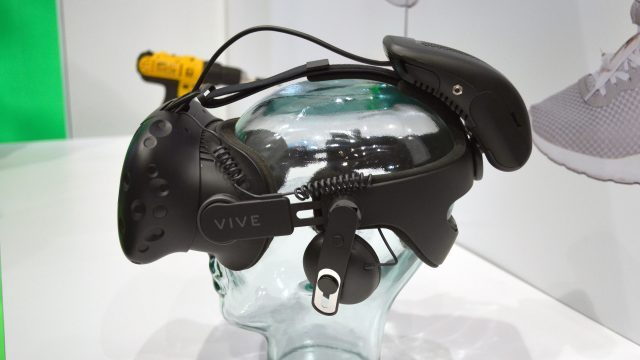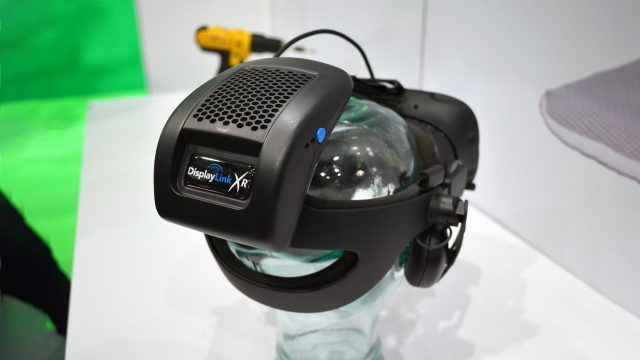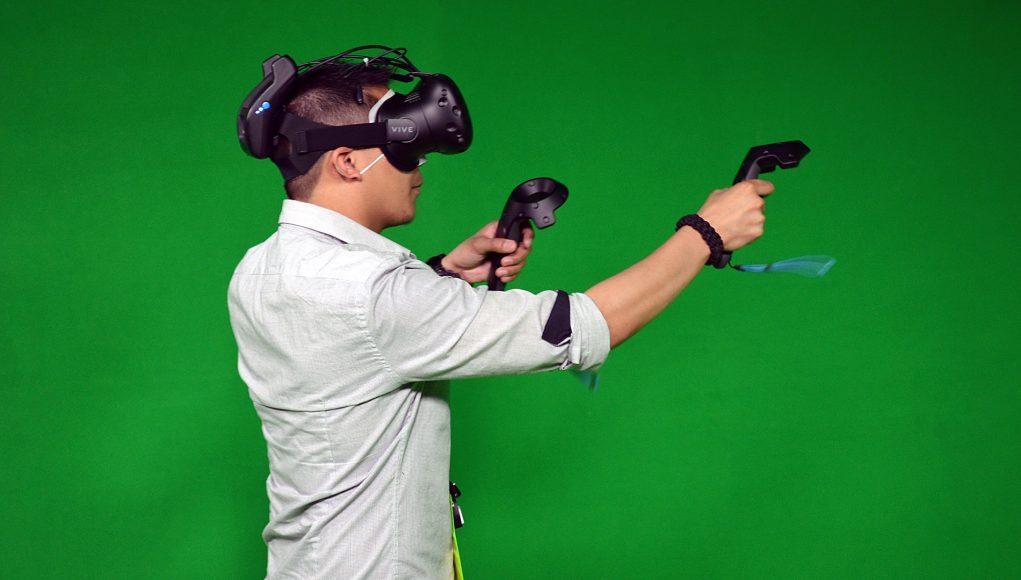At E3 2017, DisplayLink is touting their ‘XR’ wireless solution to eliminate the tether on VR headsets. Our hands-on with their reference device revealed a robust solution with impressive quality and unnoticeable latency.
DisplayLink is but one of a handful of companies now working to create the highly sought after solution to make tethered VR headsets wireless. Founded in 2003, the company has a relatively long history of creating the tech behind cable-free computer products, like wireless docks and video adapters.
For VR, the company is developing what it calls DisplayLink XR, and it’s developed a wireless VR reference device for the HTC Vive to show what it can do. In accordance with their business model, DisplayLink won’t ultimately bring this device to market themselves, they will work with device manufacturers who want to productize it as an adapter or build the tech directly into future VR headsets.

The DisplayLink XR solution comprises both hardware and software. Software running on the computer rendering the VR experience compresses the raw VR video feed using the company’s proprietary compression tech, which is then transmitted to the headset over a 60GHz WiGig link. The transmission is picked up by the receiver on the user’s head, and DisplayLink’s custom chip quickly decompresses the data in time to feed it to the headset’s display. Here at E3 2017 I got to try the solution for myself.
The DisplayLink XR head-mounted receiver reference unit looks big, but it’s actually much lighter than its size implies. When I slipped the Vive on my head with the unit attached I was surprised at the light weight, especially considering that the battery is mounted right there in inside of it. With the placement on the back of the head, the unit also balanced out the front-heavy Vive (in this case used with the standard strap rather than the Deluxe Audio Strap, but they support that too) which made the headset feel more comfortable by relieving some weight from the front of my face.
In the square booth space in which I was playing, the transmitter was mounted at the very top of the wall, about 8 feet off the ground. 60GHz wireless technology (like WiGig, the type used in this reference device) is notoriously prone to occlusion since the frequency doesn’t penetrate objects very well. Mounting the transmitter up high is likely going to be essential for achieving peak performance for any 60GHz-based wireless VR solution (though it should be noted that DisplayLink XR is link-agnostic, so as long as the bandwidth is available, it could make use of any wireless tech).

The game I played was ROM: Extraction which has enemies coming at you from all angles and also encourages you to duck behind cover; additionally the environments are very dark, and there’s lots of high-contract particle effects—it’s an excellent stress test for the compression as most compression algorithms struggle greatly to delivery high quality imagery in these scenarios.
With that said, I was impressed to find crisp imagery inside the headset, even when enemies exploded right in front of me filling most of my view with fast moving particles. I didn’t notice any glaring banding or blocky color artifacts as I played. I also opened the SteamVR menu to see how the compression dealt with text and menu imagery; I was happy to find that it looked as sharp as I’d expect it from a tethered Vive.
My play session with the DisplayLink XR reference device lasted for about 10 minutes (so not a long-term test by any means) and involved twisting, turning, ducking, and shooting. Through it all, I didn’t once see the image cut out or notice any stuttering. The latency felt spot-on; from latency alone, I doubt I’d be able to confidently tell the difference in a blind test between DisplayLink’s solution and a direct tether.
The only time I was able to ‘naturally’ spot some visual evidence of a wireless solution was when I faced the receiver opposite the transmitter, and then tilted my gaze up such that the received moved down (on the back of my head), causing my head to be directly between the transmitter and receiver. Even in these moments I didn’t lose the visuals; the dynamic compression kicked in and briefly reduced the quality of the video feed—resulting in what looked like a lower resolution version of the scene—and then very quickly snapped back to full quality once I moved out of that position.

Even when I seriously stress-tested the system by covering the antennas with my hand as best I could, I never lost the image completely, though I was able to get it to stutter a decent amount. For real usage though, it seems quite robust against quick occlusions like swinging your arms around your head, and I was very impressed with the quality throughout.







